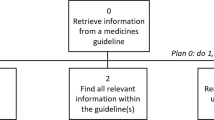Abstract
Aims
Approximately 20% of deaths from adverse events are related to medication incidents, costing the NHS an additional £500 million annually. Less than 5% of adverse events are reported. This study aims to assess the reporting rate of medication incidents in NHS facilities in the north east of Scotland, and to describe the types and outcomes of reported incidents among different services. Furthermore, we wished to quantify the proportion of reported incidents according to the reporters’ profession.
Methods
A retrospective description was made of medication incidents reported to an online reporting system (DATIX) over a 46-month-period (July 2005 to April 2009). Reports originated from acute and community hospitals, mental health, and primary care facilities.
Results
Over the study period there were 2,666 incidents reported with a mean monthly reporting rate of 78.2/month (SD±16.9). 6.1% of all incidents resulted in harm, with insulin being the most commonly implicated medication. Nearly three-quarters (74.2%, n=1,978) of total incidents originated from acute hospitals. Administration incidents were implicated in the majority of the reported medication incidents (59%), followed by prescribing (10.8%) and dispensing (9.9%), while the nondescript “other medication incidents” accounted for 20.3% of total incidents. The majority of reports were made by nursing and midwifery staff (80%), with medical and dental professionals reporting the lowest number of incidents (n=56, 2%).
Conclusions
The majority of medication incidents in this study were reported by nursing and midwifery staff, and were due to administration incidents. There is a clear need to elucidate the reasons for the limited contribution of the medical and dental professionals to reporting medication incidents.

Similar content being viewed by others
References
Department of Health (2000) An organisation with a memory: report of an expert group on learning from adverse events in the NHS chaired by the Chief Medical Officer. The Stationery Office, London
Department of Health (2001) Building a safer NHS for patients: implementing an organisation with a memory. The Stationery Office, London
Aspden P, Wolcott J, Bootman L, Cronenwett L (eds) (2007) Preventing medication errors: quality chasm series. The National Academies Press, Washington, DC
Page K, McKinney A (2007) Addressing medications errors—the role of undergraduate nurse education. Nurse Educ Today 27:219–224
Dean B, Schachter M, Vincent C, Barber N (2002) Causes of prescribing errors in hospital inpatients: a prospective study. Lancet 359(9315):1373–1378
National Patient Safety Agency (2007) Safety in doses: medication safety incidents in the NHS. National Patient Safety Agency, London
Song L, Chui M, Lau C, Cheung B (2008) A 3-year study of medication incidents in an acute general hospital. J Clin Pharm Ther 33:109–114
Sari AB, Sheldon TA, Cracknell A, Turnbull A (2007) Sensitivity of routine system for reporting patient safety incidents in an NHS hospital: retrospective patient case note review. BMJ 334:79
Williams DJ, Olsen S, Crichton W, Witte K, Flin R, Ingram J et al (2008) Detection of adverse events in a Scottish hospital using a consensus-based methodology. Scot Med J 53(4):26–30
Institute for Safe Medication Practices [Online] (2008) . Available from: http://www.ismp.org/Tools/highalertmedications.pdf. Accessed 4 July 2009
Cohen H, Pangilinan J, Hasan A, Scudder L (2008) Avoiding errors associated with insulin therapy [online]. Available from: http://cme.medscape.com/viewarticle/702444?src=cmemp. Accessed 4 July 2009
Lamont T, Cousins D, Hilson R, Bischler A, Terblanche M (2010) Safer administration of insulin: summary of a safety report from the National Patient Safety Agency. BMJ 341:5269
Asghari F, Fotouhi A, Jafarian A (2009) Doctors’ views of attitudes towards peer medical errors. Qual Saf Health Care 18:209–212
Sarvadikar A, Prescot G, Williams DJ (2010) Attitudes to reporting medication error among differing healthcare professionals. Eur J Clin Pharmacol 66:843–853
Miller R, Clark S, Lehmann U (2006) Computer based medication error reporting: insights and implications. Qual Saf Health Care 15(3):208–213
Tobaiqy M, Mclay J, Ross S (2007) Foundation year 1 doctors and clinical pharmacology and therapeutics teaching. A retrospective view in light of experience. Br J Clin Pharmacol 64:363–372
Ammenwerth E, Schnell-Inderst P, Machan C, Siebert U (2008) The effect of electronic prescribing on medication errors and adverse drug events: a systematic review. J Am Med Inform Assoc 15(5):585–600
Han Y, Carcillo JA, Venkataraman ST, Clark RS, Watson RS, Nguyen TC, Bayir H, Orr RA (2006) Unexpected increased mortality after implementation of a commercially sold computerized physician order entry system. Pediatrics 116(6):1506–1512
Ashcroft DM, Cooke J (2006) Retrospective analysis of medication incidents reported using an on line reporting system. Pharm World Sci 28(6):359–365
Beso A, Dean B, Barber N (2005) The frequency and potential causes of dispensing errors in a hospital pharmacy. Pharm World Sci 27:182–190
Poon E, Cina J, Churchill W, Patel N, Featherstone E, Rothschild J et al (2006) Medication dispensing errors and potential adverse drug events before and after implementing bar code technology in the pharmacy. Ann Intern Med 145(6):426–434
Hodgkinson B, Koch S, Nay R, Nichols K (2006) Strategies to reduce medication errors with reference to older adults. Int J Evid Based Healthc 4:2–41
Rothschild JM, Keohane CA, Cook EF et al (2005) A controlled trial of smart infusion pumps to improve medication safety in critically ill patients. Crit Care Med 33:533–540
Taxis K, Dean B, Barber N (1999) Hospital drug distribution systems in the UK and Germany—a study of medication errors. Pharm World Sci 21(1):25–31
Author information
Authors and Affiliations
Corresponding author
Rights and permissions
About this article
Cite this article
Alrwisan, A., Ross, J. & Williams, D. Medication incidents reported to an online incident reporting system. Eur J Clin Pharmacol 67, 527–532 (2011). https://doi.org/10.1007/s00228-010-0986-z
Received:
Accepted:
Published:
Issue Date:
DOI: https://doi.org/10.1007/s00228-010-0986-z



